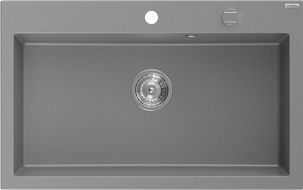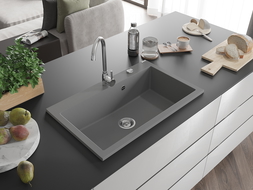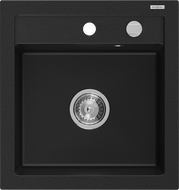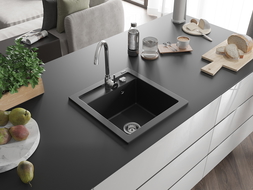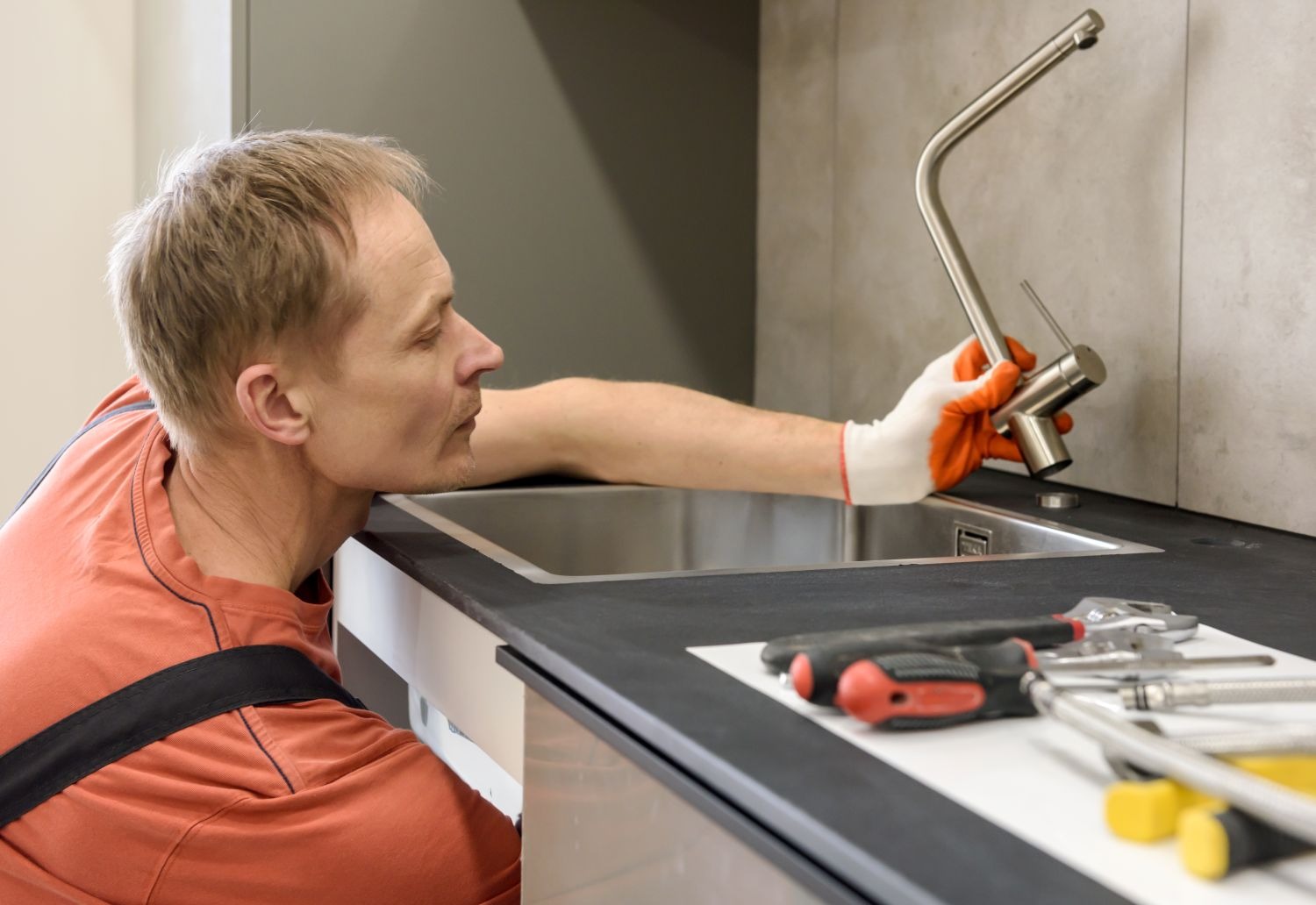
Nothing hinders work in the kitchen quite like a slow or completely blocked sink drain. Standing water in the drain is not just a problem with water removal, but also a health hazard. Decaying food residues can become a breeding ground for pathogenic microorganisms. That's why it's important to ensure the sink's proper drainage. Fortunately, most problems can be solved independently using home methods that do not require financial investment. So, how to unblock a sink?
What Will You Learn from This Text?
Unblocking a kitchen sink can be difficult, which is why it's worth preventing it. However, if despite proper prevention, the problem occurs, it's good to know how to handle it. That's why from our text, you will learn:
What home remedies can be used to unblock a sink.
When appropriate tools may be more effective.
In which situations calling a plumber is necessary.
Is a Clogged Sink Your Problem?
Daily meal preparation and cleaning afterward can cause the sink to become clogged. First of all, it is essential to prevent this from happening – after all, it's better to prevent than to deal with a clogged drain. To effectively prevent the sink from clogging, remember to systematically remove food residues accumulating on the drain grate. The smaller the mesh holes, the more effectively they catch pieces falling into the sink.
The clogging process takes a little time, so by ensuring nothing gets into the siphon, you can significantly delay it, or even completely eliminate it. It's worth remembering to dispose of food residues before placing dishes or pots in the sink, by throwing them in the bin or pouring them into the toilet. Additionally, do not pour substances into the sink that can cause clogs. Dissolved fat, paint residues, thick oil – all these substances may harden under the influence of cold water further in the plumbing, creating a blockage that prevents effective water outflow from the sink, making it necessary to unblock the sink.
How to Unblock a Severely Clogged Sink?
If, despite efforts, the sink becomes clogged, it must be unblocked somehow. Fortunately, in most cases, it is possible to handle it independently, without needing to call a plumber. There are many home methods that are not only cheap but also effective and safe for household members' health. Before using aggressive chemical substances, it's worth trying several proven methods. To use the most popular home methods for a clogged sink, equip yourself with supplies such as:
baking soda,
spirit vinegar,
hot water,
rubber plunger,
drain snake for obstructions further in the plumbing.
It's easiest to start with a plunger. Rhythmic pressing of the rubber “bell” creates a vacuum that causes standing water and trapped debris to be pushed further down the drain and into the sewer pipe. In the case of a very severely clogged sink, especially further in the plumbing, to unblock and clear it, you can use a special spring – this is a physical method and therefore very effective. The spring is inserted through the drain hole and pushed until it reaches the clog, which is broken up and removed by it. This is a method with which you can unblock a heavily clogged sink. As you can see, you can simply classically push through the sink, which, when it comes to home methods for a clogged sink, is proven and effective.
Home Methods of Drain Unclogging
Before reaching for tools to unclog, it's worth trying to unblock the sink with baking soda. This simple method is very effective for small clogs caused by food residues, grease deposits, and detergents. Completely empty the sink and, if possible, remove any debris on the strainer at the bottom. If possible, remove the strainer. Then simply pour half a cup of baking soda and add the same amount of vinegar.
The mixture of baking soda and vinegar reacts violently – a gentle bubbling and foam appear. This way, the deposit on the siphon walls will be removed, and the accumulated water will help rinse it out. After the bubbling stops, flush the sink with hot water. This simple way can effectively clean the entire drain. In other words, can you unclog a sink with vinegar? Yes, you can! You just need to choose the right moment when the clog isn't too compacted yet.
If unblocking the sink with soda doesn't bring the expected results, you'll need to resort to chemical agents, making sure that the preparation is suitable for the plumbing you have.
Before the Sink Gets Clogged...
A clogged sink is something that can happen to anyone, and unblocking it shouldn't be too problematic. However, it's worth remembering certain rules that can effectively prevent it from clogging.
Don't allow residues in the sink basin to flow into the drain.
Do not pour hot fat into the sink, which not only settles in the pipes after solidifying but can also damage the siphon.
Knowing how to unblock a heavily clogged sink with soda, and even without soda, you can unblock the sink with vinegar, or as a last resort, pour a heaping tablespoon of salt and pour it with boiling water into the drain. If this doesn't work, there's still mechanical draining using a plunger or spring. However, before it comes to that, it's worth regularly cleaning the drain and the overflow hole.
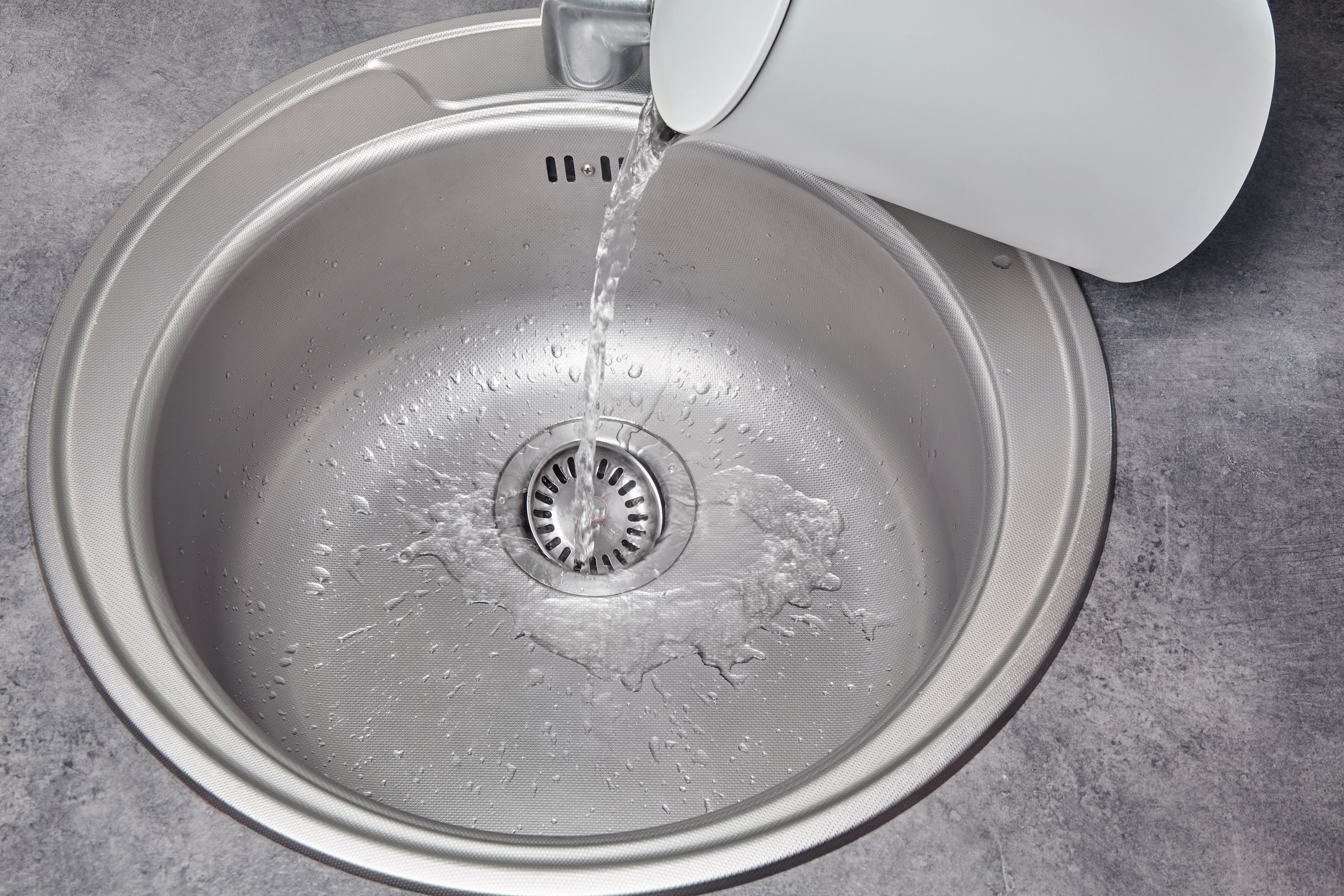
How to Unblock a Sink Pipe?
Sometimes the problem isn't in the sink itself but in the drainage pipes, which may be clogged deeper in the system. In such cases, the question of how to unblock a sink pipe becomes crucial. One of the ways is to use a drain snake, which mechanically removes the clog. However, if you prefer to avoid damaging the pipes, you can try milder methods, such as baking soda and vinegar or salt with boiling water. It's important to act carefully and not use overly aggressive chemical agents, which could damage the installation.
Preventing Clogged Drain Problems
To avoid having to wonder how to unclog a blocked sink, it's worth introducing a few habits that prevent clogs. Regular cleaning of the strainer in the kitchen sink is essential – it allows catching food residues before they reach the drain. Additionally, once every few weeks, it's worth flushing the drain with hot water to prevent the build-up of grease and other deposits. This type of prevention can significantly reduce the risk of a clogged sink or kitchen sink drain.
Mechanical Methods of Drain Unblocking
If home methods, like baking soda or vinegar, aren't working, you can resort to more advanced tools. A rubber plunger is a classic solution that works for most clogs. Rhythmic movements with the plunger create a vacuum that helps push the obstruction and restore water flow. For more stubborn clogs, like a blocked kitchen sink, a drain snake can be used. This tool is particularly effective when the problem occurs in deeper parts of the installation.
How to Unblock a Washbasin Pipe?
A clogged drain in a washbasin can be as problematic as a clogged kitchen sink. The unblocking process is very similar – you can start by pouring baking soda into the drain, pouring vinegar over it, and after the chemical reaction, flushing with hot water. If this doesn't help, it's worth checking whether the siphon is blocked. In many cases, all it takes is unscrewing the siphon and removing the accumulated debris. It's important to do this carefully to avoid damaging the pipes.
Additional Tips
Unblocking a sink or washbasin doesn't have to be complicated if the right methods are applied. Home methods for drain unclogging, such as baking soda, vinegar, salt, or hot water, are cheap, effective, and safe. However, prevention is key, which will help avoid problems with a clogged sink. Regular cleaning, avoiding pouring fat into the drain, and using a strainer are simple steps that will ensure free water flow for a long time.
If the problem with a clogged sink keeps recurring, it's worth considering consulting a plumber, who will check if the installation needs thorough cleaning or repair. In the meantime, by following the above tips, you can effectively handle questions like: how to unblock a sink, how to unclog the kitchen sink, or how to unblock a washbasin pipe. We advise remembering that regular maintenance is the key to keeping the installation in good condition and avoiding costly repairs. Simultaneously, we recommend our blog, where you can read about how to clean the oven, so it always looks brand new.



















